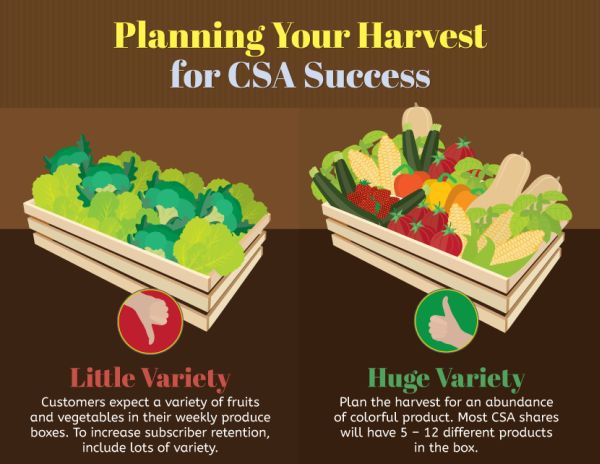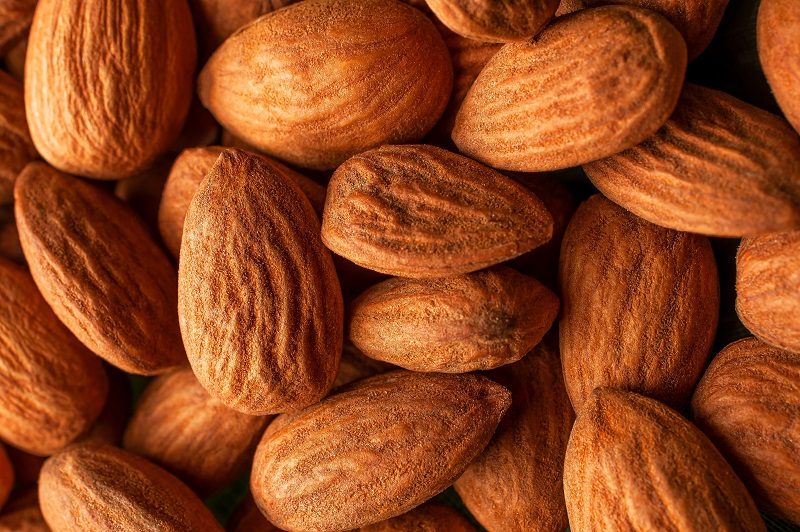ICYMI: How To Start a CSA

Editor’s note: This article originally ran in January 2016.
CSA stands for community-supported agriculture. Farmers use this model to sell “shares” of their harvest to supporters. In exchange for a flat fee paid upfront, subscribers receive weekly (or bi-weekly) boxes of produce throughout the season that can be picked up at predetermined locations at set times.
Growers benefit from having guaranteed income and capital to purchase seeds and other supplies, and subscribers get access to a diverse array of fresh fruits and vegetables for an entire growing season.
While the CSA model is popular, you should know a few things before signing up subscribers.
Preparing for Success
Starting a CSA is ideal for professional farm marketers, who are both growers and who deal with the public regularly. Subscribers purchase shares with the expectation of receiving fresh produce all season long, which means you need the experience to deliver. A CSA is a business, and it’s important to consider the following issues.
Check Local Zoning Laws
On a farm, it might not be a problem to have subscribers stopping by to pick up their shares. If your garden or homestead is in a residential neighborhood (or subject to HOA rules), on-site distribution might be prohibited. If this is the case, arrange for an alternate pickup location. A local farm-to-table restaurant may agree to allow subscribers to collect their shares there; delivering shares is another option. You’ll also need to check with the city or county to determine whether you need a business license to sell fruits and vegetables.
Establish Agreements
Some CSA operators have written agreements for subscribers, spelling out the price of the share, the length of the season, what is included with each share, and pickup times and locations.
It’s also a good idea to outline some of the risks in a written agreement. Some crops may fail, and others may exceed expectations; subscribers need to understand that their shares could include a lot of kale and no tomatoes and that subscribing to a CSA means taking on a share of the risk. A University of Illinois professor of agricultural law developed a model CSA agreement that is available as a free download.
Put Safety First
Make sure you understand and follow state and federal guidelines for safe food handling and storage.
Cover Your Assets
Research insurance options. You want to be covered if a subscriber gets sick from something in their CSA share or gets injured while picking up their produce from the garden.
Planning the Harvest
The success of a CSA depends on good planning. Subscribers will expect to receive equal amounts of produce throughout the season, not a few heads of lettuce in the spring, dozens of vegetable varieties in the summer, and a handful of turnips in the fall.
CSAs often operate for 20 weeks; most also offer 10-week (or half-season) shares. Plan to have multiple crops available throughout the season.
As a general rule, each share should contain 10 to 20 pounds of fruits and vegetables. To provide a diverse array of produce, aim to harvest between five and 12 different types of produce each week. Use these numbers to plan the number of available shares your garden can accommodate.
Consider planting multiple varieties of the same type of vegetable. Some tomato varieties make great slicers, others are perfect for sauces and canning, and some, such as purple, black, or striped varieties, are just offbeat enough to wow subscribers. Don’t forget about herbs, which offer a nice complement to fresh produce.

Setting the Price
The cost per share should be fair for subscribers, and it should provide enough capital to cover your costs.
The most basic method of establishing the cost per share is simple. First, estimate the market price of the included produce for an average share. Then multiply that by the number of weeks in a share.
In other words, if a subscriber would spend $20 at the farmers market to purchase an equivalent amount of produce included in one weekly box, set the price at $200 for a half share (10 weeks) and $400 for a full share (20 weeks).
Do some quick calculations to ensure that the cost per share is enough to cover the cost of soil, seeds, and other supplies while providing a fair income for the work that goes into growing vegetables as well as marketing and managing the CSA.
Recruiting Subscribers
Once the number of available shares is calculated, it’s time to sign up subscribers.
Spread the word about the CSA to friends, neighbors, and co-workers; post on social media; and create flyers that include the share price, length of the season, and what types of produce will be available. Don’t forget to include information about how people can sign up!
As the CSA grows, consider starting a newsletter that includes updates on the crops, photos, recipes, and information about washing, storing, and preserving produce in weekly boxes.
Maintaining Momentum
Operating a CSA is a lot of work. The good news is that you don’t have to operate solo.
Some farms offer a discount on shares in exchange for volunteer labor. While an extra set of hands might sound appealing, subscribers might not be well versed in growing vegetables, and they could need a lot of direction and training to be of value; keep this in mind before inviting subscribers to work for food. A better bet is partnering with another homesteader or experienced backyard gardener to trade responsibilities and share revenues.
Co-operating a CSA can also mean expanding the types of products included in the share. If a neighbor raises chickens or bees, you could supplement the fresh produce you’re growing with eggs or honey from their homestead.
At the end of the season, ask subscribers to fill out a survey about their experience. The information you gather can help you plan crops, tweak pick-up times or locations, and adjust pricing or share sizes before the next season.









